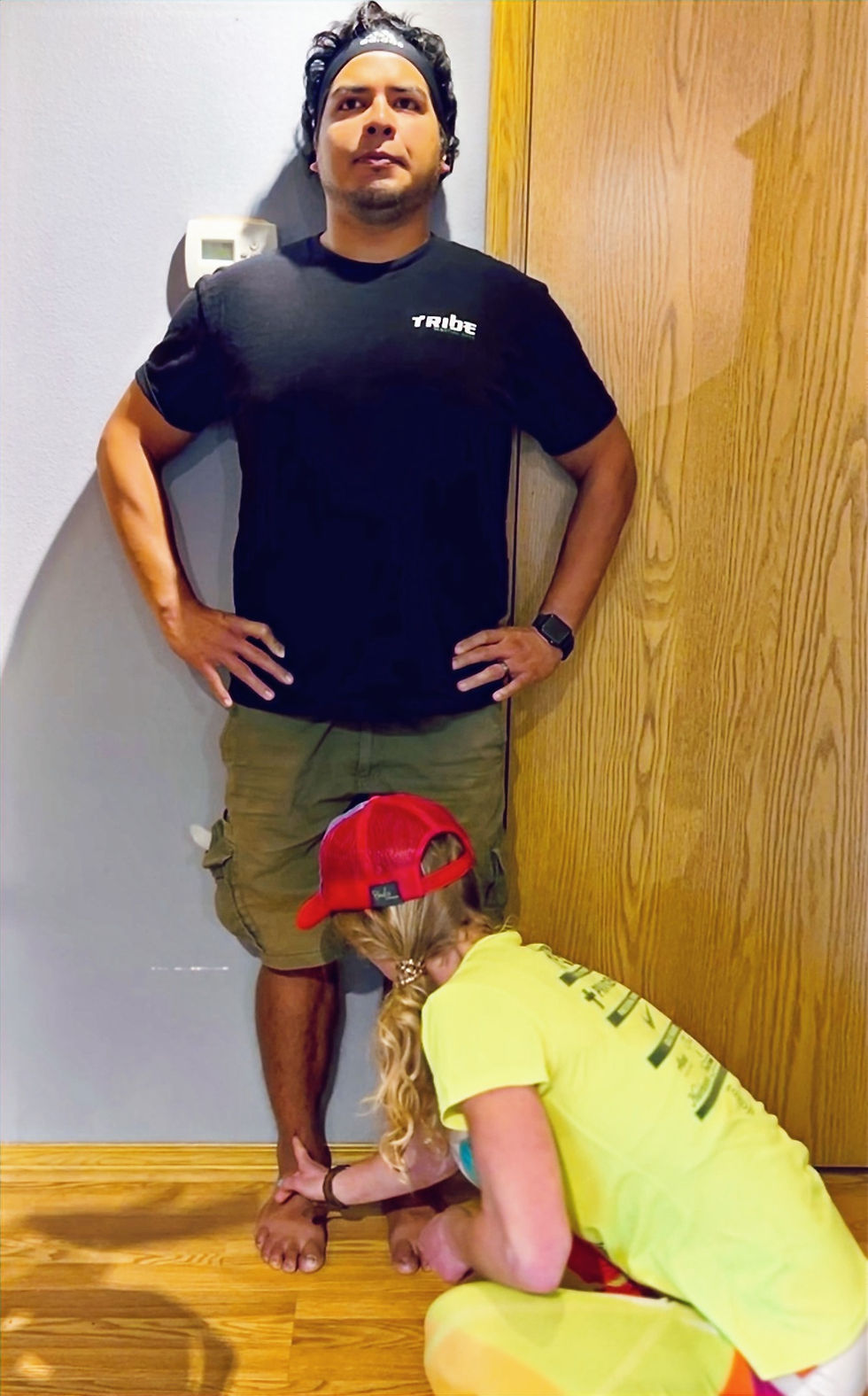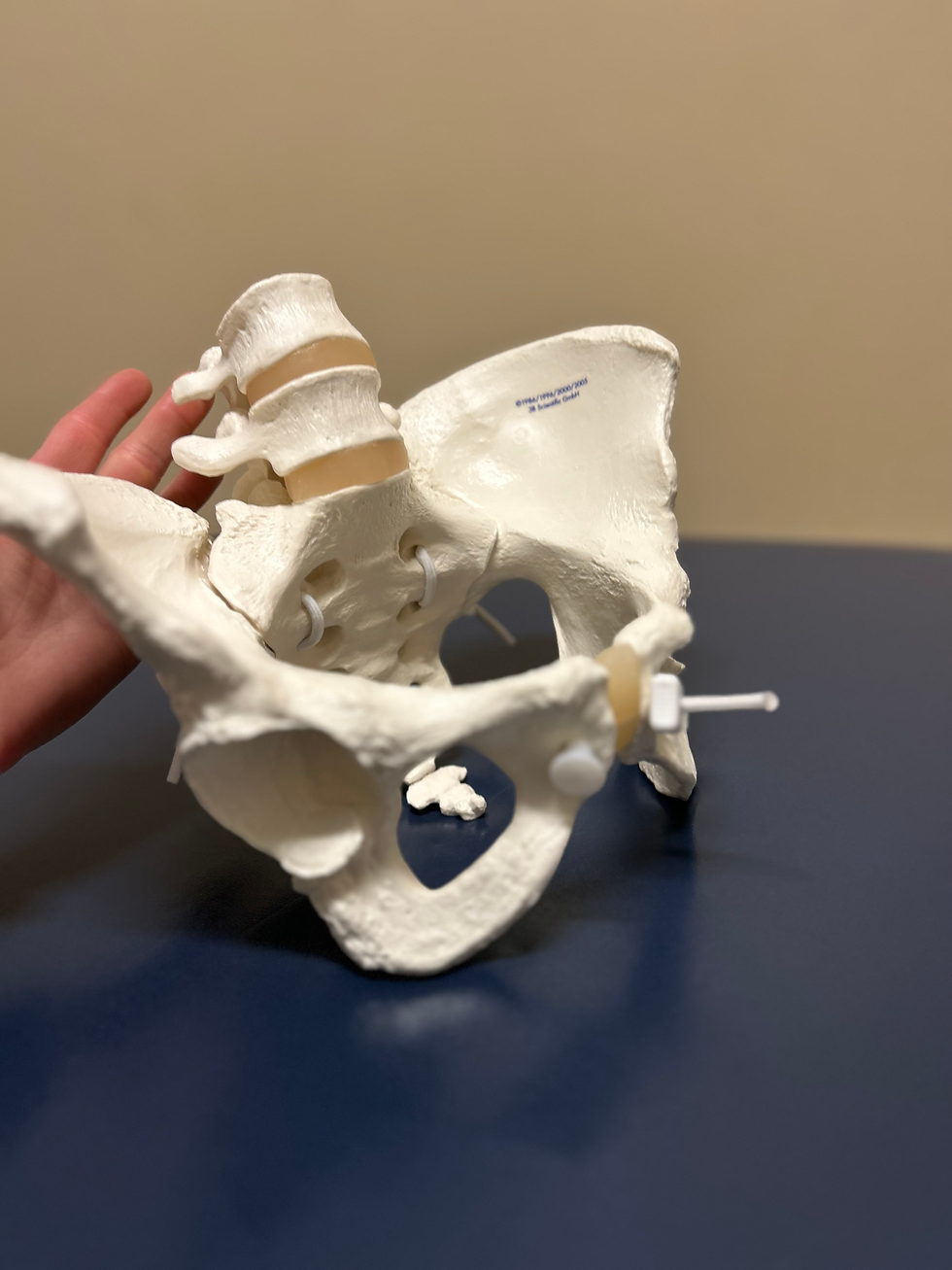I guarantee at some point in your life someone has told you to stand up straight. In fact, I bet you corrected your posture just now. Whether you are sitting or standing, take stock of your shoulders,

your spine, your hips, and your feet. Where is your weight? I bet it’s forward. Are your shoulders touching the back of your chair? My guess is, probably. Are your hips stacked over your heels? I bet they are shifted more over your toes. Now, I could be wrong, you might be perfectly lined up and in that case, congrats! You are one of the few who can find neutral positioning easily. As for the rest of you, let's talk about what neutral posture is, how we lose our neutral posture, and how you can practice getting there.
Go stand against the wall with your heels about an inch from the wall and find your ‘stand up straight’ posture. This time let’s start at your feet. Make them straight by lining up your pinkie toe and your heel, or as close to that as you can get. Next, check in with your back. What part of your back is touching the wall? If it’s your behind and your shoulders, place your hands on the front edge of you rib cage and push it down. Let your shoulders come away from the wall and the middle of your back touch the wall. If you feel really awkward, you’re probably doing it right. Let your arms hang back down at your sides and let your shoulders relax, but make sure your thumbs are facing forward. Last, find your chin parallel to the ground and pull your chin straight back so that the back of your head touches the wall with your eyes forward not shifted up towards the ceiling. Don’t lose your rib cage by flaring it forward and letting your shoulders touch the wall again. If you can’t hold it all together, don’t worry, you’re not alone! Let’s talk about why and how…but first, anatomy.
Anatomy
Feet: We will get into more detail in future posts, but for now here are the important parts…Your toes and feet are not the same thing. Your feet have 26 bones in them. They are meant to change shape.
Tibia and fibula: The tibia is your shin bone and makes up part of your ankle and part of your knee. The fibula makes up part of your ankle and is a non load bearing bone.
Femur: This is your thigh bone and makes up the other half of your knee joint and part of your hip joint.

Pelvis: Your pelvis is important in your posture, walking, and sitting. The top of your femur meets your pelvis to make your hip joint. Your pelvis has different anatomical parts. The ASIS (anterior superior iliac spine), this is the pointiest part on the front of your pelvis and the PSIS (posterior superior iliac spine) are the two pointy bones in the back just offset from the spine. Your iliac crest is the bony prominence you feel when you place your hands on top of your pelvis.
Tailbone vs sacrum: your tailbone attaches to the lowest part of your sacrum and it’s really hard to feel it when palpating (poking around). Your sacrum is what links your spine to your pelvis and it’s easy to find when palpating.
Lumbar spine: This is your low back. You have five lumbar vertebrae, L1-L5.
Thoracic spine: This is the longest part of your back and where your rib cage attaches. You have 12 thoracic vertebrae, T1-T12. And you 12 ribs, imagine that!
Cervical spine: This is your neck. You have seven cervical vertebrae, C1-C7, and eight cervical nerves, C1-C8. It’s confusing, but stick with me.
Scapula: This is your shoulder blade and it is important when we talk about you back and when we talk about your shoulder. It actually makes up part of your shoulder joint, it forms the socket.
Humerus: This is your upper arm bone and the ball of the ball and socket joint that is your shoulder.
Ribs: You have 12 ribs and they attach to each of our 12 thoracic vertebrae. Their job is to protect your internal organs, but they also play a role in your posture, your breath, and your mobility. They start as high as your collarbone and you can feel them through most of your back. The last two ribs on each side are floating ribs and only attach at your back. The rest of them attach at your back and either directly to your sternum (breast bone) or into cartilage that connects to your sternum.
Now that we have some anatomy definitions, let's talk about why we lose our neutral.
Over the course of our life we create compensatory movement strategies to follow the path of least resistance in order to do the things we want or need to do. These compensations can happen for a long list of reasons…injury, footwear, job, sports, hobbies…the list goes on. As these compensations progress over our life, we wear out our joints unevenly, break down soft tissues, and cause significant changes to our alignment. This can lead to pain, decrease our range of motion, and increase our dependence on the compensatory strategies.
Working toward a more neutral skeleton starts with focusing on one thing at a time. It’s overwhelming to back yourself up against the wall, like I asked you to do earlier, and then keep it all organized as you try to walk, do the dishes, or shop for groceries. Start with your feet or your ribs and work on one thing in sitting, standing, and walking.
If you are going to start with your feet, here are the basics: Line your pinkie toe and your heel up on the same line. Your toes might look like they are pointing toward each other, but that’s ok, they will change overtime. Remember your toes and your feet are not the same thing. Your knees might feel like they are also rolled toward each other. Think about rolling your knee caps out over your last two toes. This is rotating your femoral head in the socket of your hip joint. Do you feel some changes in your hip muscles? When you stand and walk, work on keeping your feet as straight as you can.

If you are going to start with your ribs, here are the basics: Find the front edge of your ribs where they attach to your sternum and follow them down a couple of inches. Rest your hands here and play with flaring your ribs forward and then pulling them down or back. Find a relatively comfortable position closer to ribs down. This can be your starting point. You might feel like your thoracic spine is slightly rounded…that’s ok!
As you correct yourself, it will become easier, your tissues will adapt and you will notice positive changes. These changes will slowly allow you to move with more ease and less pain. As your body gets closer to neutral you will have access to your muscles full potential. This will allow you to hold your body up against gravity and minimize your compensatory movement strategies. Becoming aware of your compensations so you can stabilize and mobilize will help you move better and feel better.

Comments